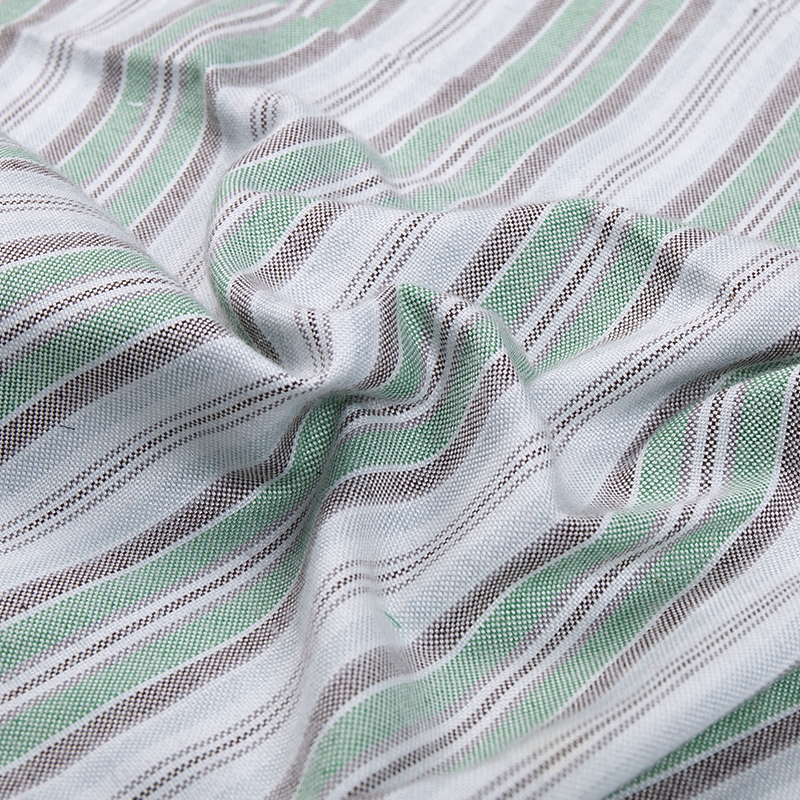The use of chemical fibers in textile manufacturing has transformed the production of blended fabrics, providing them with enhanced durability, versatility, and performance. These fibers—such as polyester, nylon, and acrylic—are often combined with natural materials like cotton, silk, and linen to create fabrics that capitalize on the strengths of both components. Yarn dyed blended fabrics are a specific subset of textiles that undergo a specialized dyeing process, in which the yarn is dyed before weaving, allowing for deep, vibrant color retention. The combination of chemical fibers and natural fibers in these fabrics results in a product that is highly functional, aesthetically pleasing, and adaptable to various uses across industries, from fashion to home textiles.
One of the primary reasons chemical fibers are incorporated into blended fabrics is their superior durability. Natural fibers like cotton, wool, and linen, while comfortable and breathable, tend to wear out faster under strain, repeated washing, or prolonged exposure to the elements. Chemical fibers like polyester, on the other hand, are known for their strength and resistance to wear and tear. When these fibers are blended with natural materials, the resulting fabric becomes much more resistant to abrasion, fading, and shrinking. For example, polyester-cotton blends, commonly used in everyday garments, combine the softness and comfort of cotton with the strength and wrinkle resistance of polyester. This blend makes garments more durable and easier to maintain, with less risk of shrinkage or deformation after washing.

In addition to durability, chemical fibers contribute significantly to the performance of blended fabrics by enhancing their stability and dimensional integrity. Natural fibers can be prone to changes in size and shape after washing or extended use, but chemical fibers help the fabric retain its form. This is especially crucial in apparel manufacturing, where consistency in size and fit is essential. Blends like Tencel (a semi-synthetic fiber made from cellulose) with chemical fibers can maintain their shape better than pure cotton or linen, reducing the occurrence of unsightly stretching or shrinking. For industries such as activewear and sportswear, the ability of blended fabrics to maintain their structure under physical strain is vital. Polyester blends, in particular, are popular for sports apparel because they are durable, lightweight, and resistant to stretching, making them ideal for high-performance clothing.
Chemical fibers also enhance the wrinkle resistance and ease of care of blended fabrics. Natural fibers like cotton or wool, while comfortable, tend to wrinkle easily and require ironing to maintain a polished appearance. Blending these with synthetic fibers such as nylon or polyester results in fabrics that retain their smooth appearance longer without needing extensive care. This ease of maintenance is a significant advantage for consumers who prioritize convenience in their daily lives. For example, polyester-cotton blends used in home textiles such as bedsheets and curtains offer the softness of cotton with the low-maintenance benefits of polyester, reducing the need for frequent ironing and extending the lifespan of the product.
However, while chemical fibers provide numerous advantages in enhancing the performance of blended fabrics, there are trade-offs, particularly in terms of breathability and moisture management. Natural fibers like cotton and linen are highly breathable, absorbing moisture and allowing air to circulate, making them ideal for warm climates or activities where comfort is a priority. By contrast, chemical fibers tend to have lower moisture absorption rates and may trap heat, leading to discomfort in certain situations. This is one of the main challenges with polyester-cotton blends; while they are durable and easy to care for, their breathability is often inferior to that of 100% natural fiber fabrics. To mitigate this, manufacturers often explore blends that strike a better balance, combining fibers in specific proportions to optimize comfort without sacrificing durability.



 English
English Español
Español Oct 11,2024
Oct 11,2024














 +86-519-86503571
+86-519-86503571
 Phone: +86-13218666905
Phone: +86-13218666905 Tel: +86-0519-86503571
Tel: +86-0519-86503571 Fax: +86-0519-86508551
Fax: +86-0519-86508551 E-mail:
E-mail: 